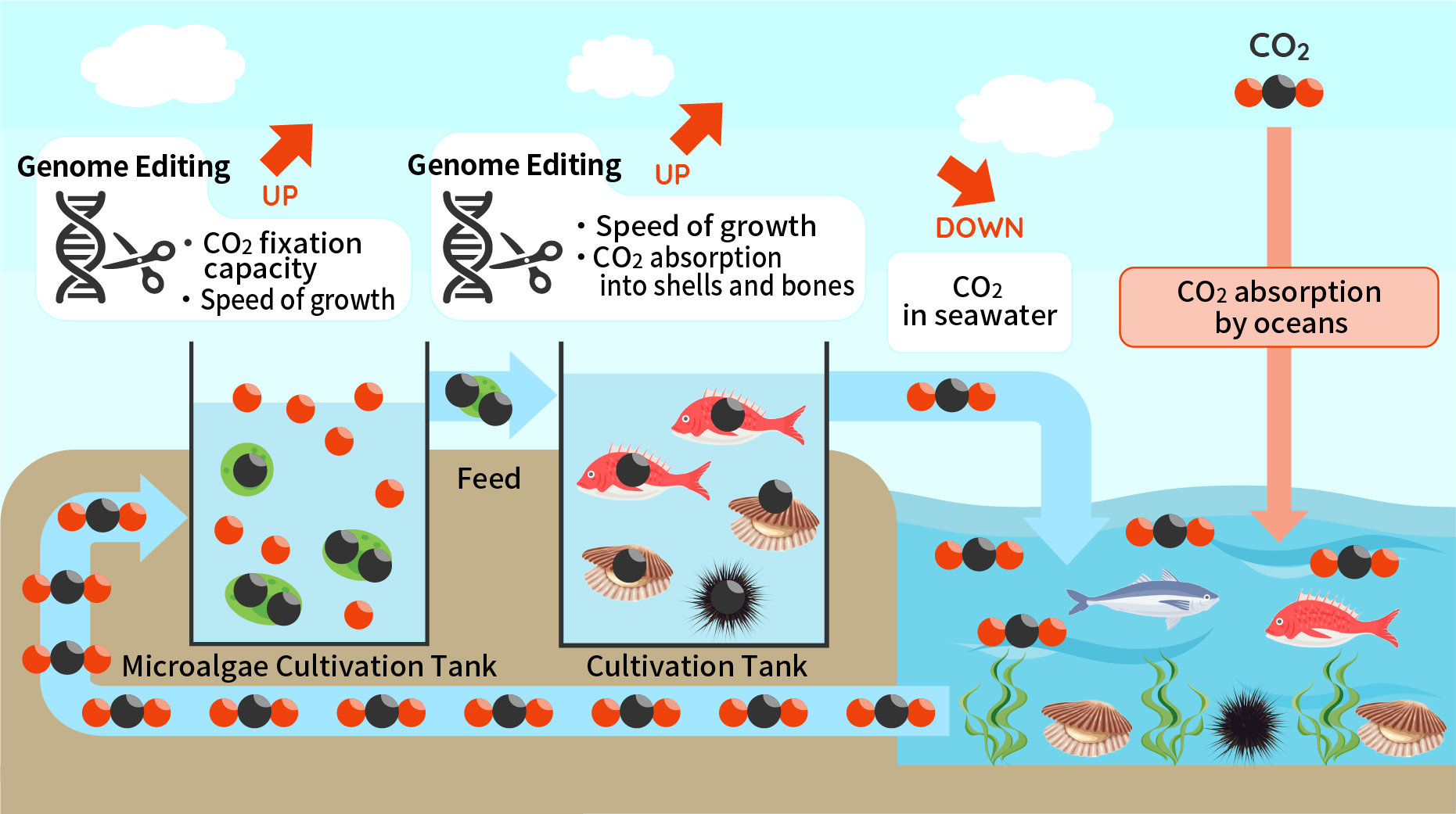Technology
NTT Green & Food’s Technologies is one of the
Methods of Speeding Up the Process of Various
Breed Improvement.
Genome editing technology induces mutation by cutting off the target gene (DNA) and realizes the desired breed improvement in a short period. Mutations caused by genome editing are equivalent to those occur in the natural world when organisms adapt to the environment. Therefore, genome editing technology can speeds up the process of various breed improvement over a long period.
What is Breed Improvement?
Genome editing technology*1 is one of the breed improvement methods, and it has been reported that the desired improvement, such as fast-growing red sea bream and disease-resistant flounder, has been achieved in a short period.
Conventional selective breeding requires a great deal of expense due to several decades of continuous breeding. Genome editing enables rapid breeding by cutting (deletion) of target genes and weakening or enhancing the original functions of living organisms through the natural repair process of the cut genes.
Breed improvement by genome editting is to cut only one gene, and these phenomena (mutations) can cause in nature. In contrast, genetic modification is to insert genes from other organisms, and may bring about various mutations unlike genome editing.
There are variuous methods to improve breeds, such as selecting those whose properties have changed due to mutations that occur in nature, and cross-breeding by crossing different breeds. We will select the optimal breeding method according to the land-based aquaculture environment and consumer needs.
*1: Breed improvement technology for marine produce, including genome editing technology, are owned by Regional Fish Institute, Ltd.
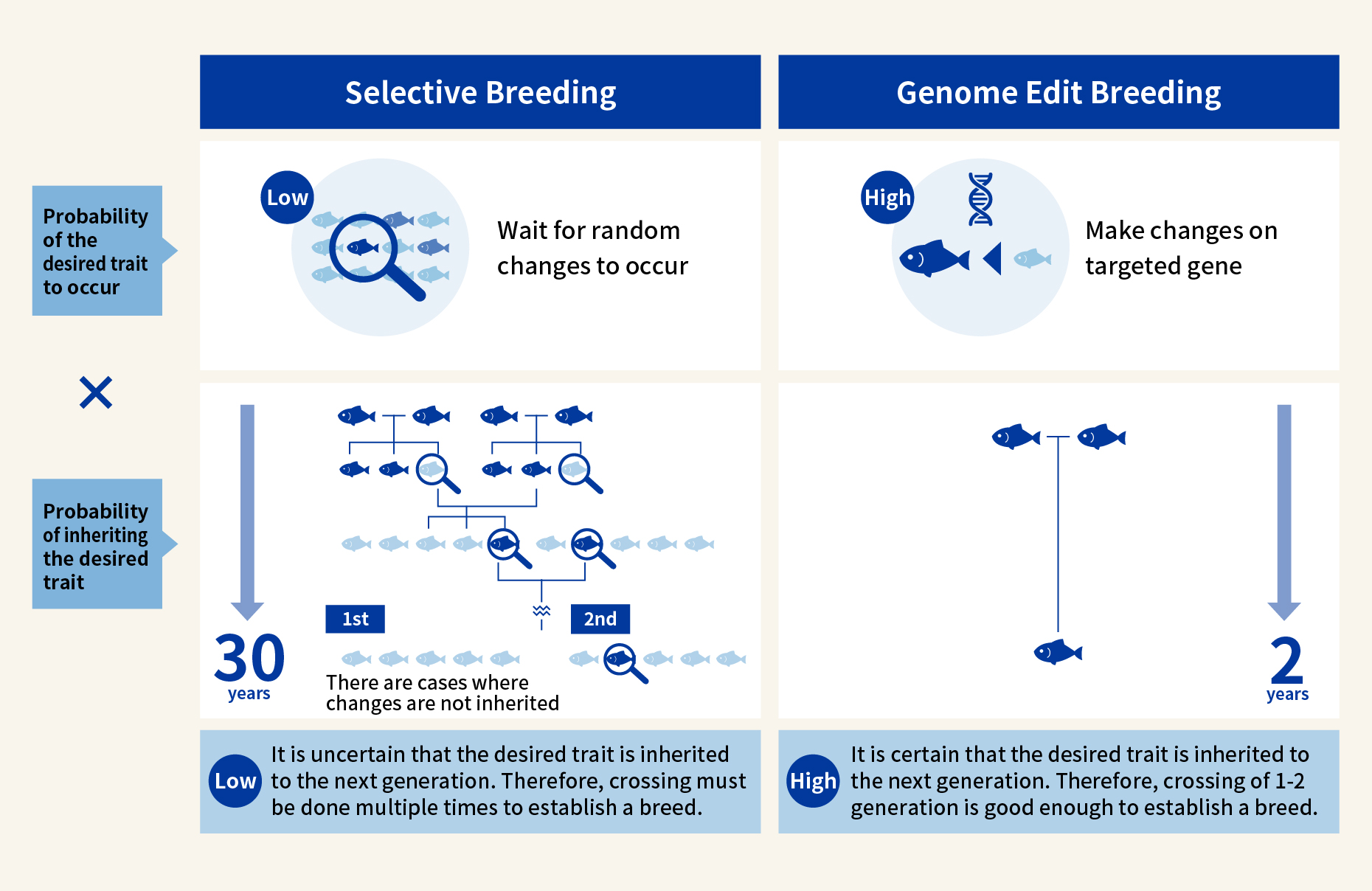
What is Genetic Modification?
Genetic modification refers to technology to create organisms with new properties by incorporating useful genes of one organism into the DNA (deoxyribonucleic acid) sequence of another organism to be improved.
distribution, cultivation, or other uses of genetically modified organisms (GMOs) is only possible after it is deemed safe following scientific safety investigations conducted according to the use purpose and based on various laws.
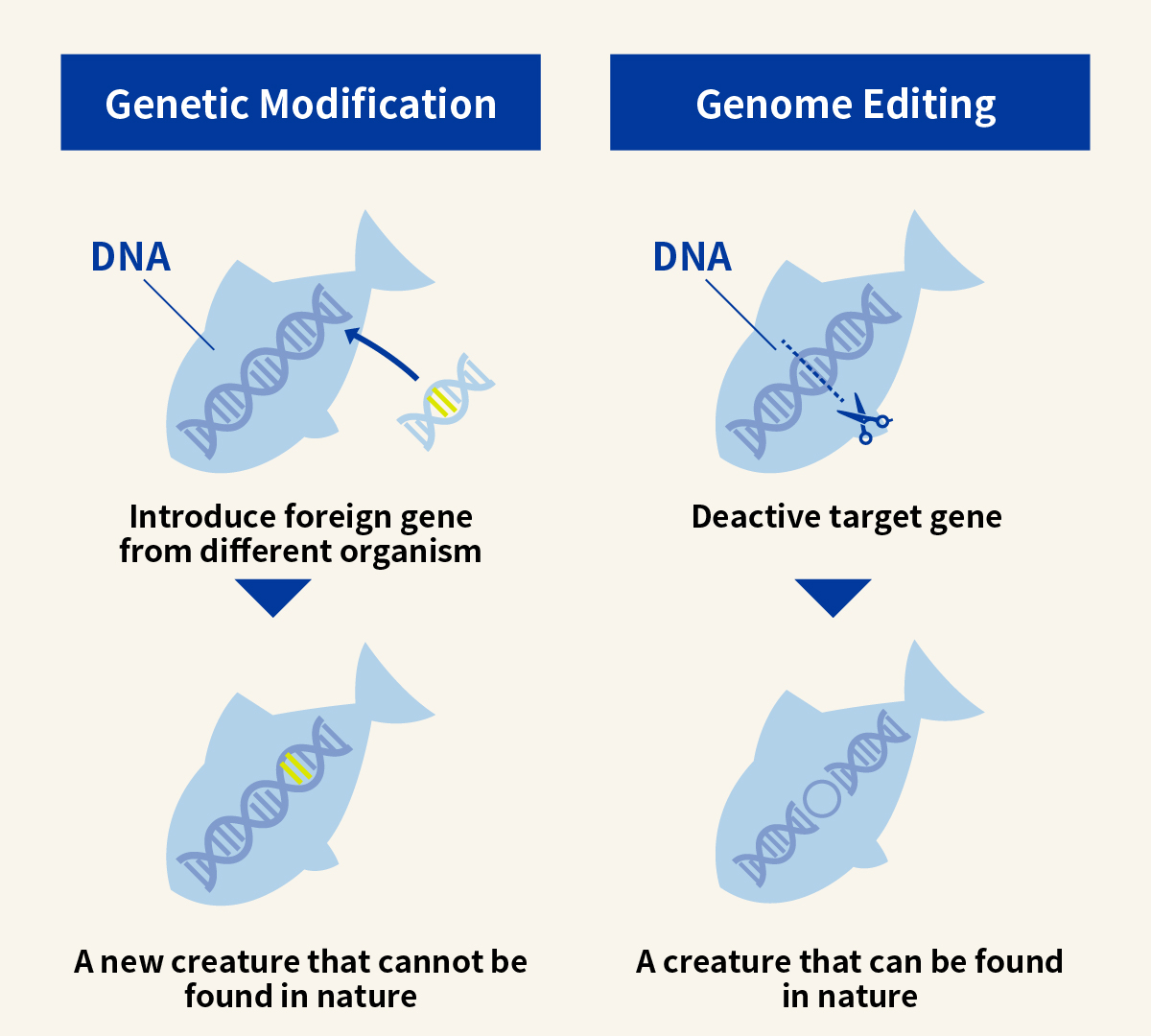
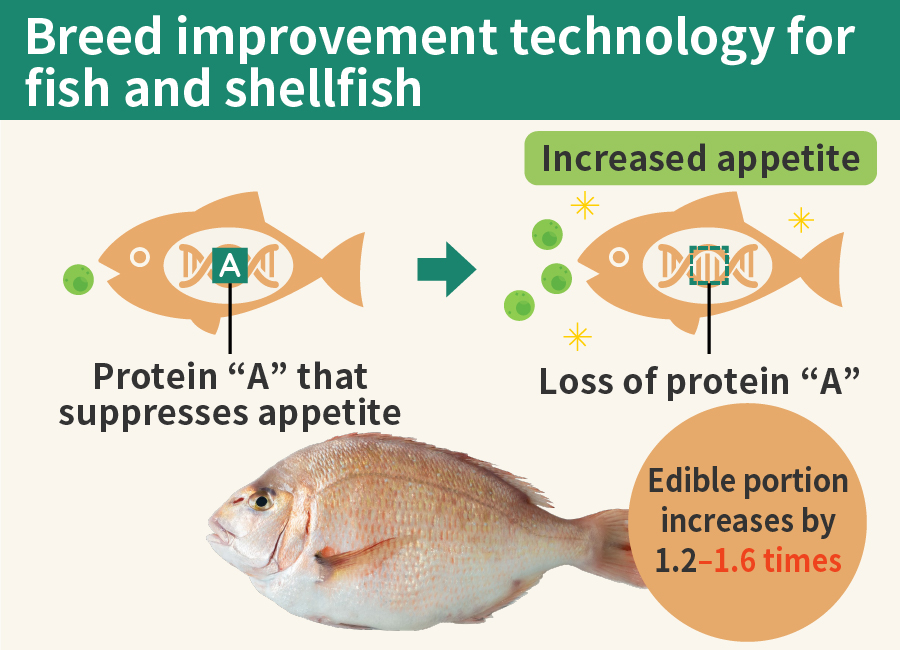
Breed Improvement × Fish and Shellfish
Let’s use red sea bream as an example of the effects of genome editing.
Knocking out the gene that suppresses muscle cell growth expands the red sea bream’s edible part by 1.2 to 1.6 times compared to standard fish.
With each muscle fiber becoming larger, this allows for easier heat penetration, which results in a plump and soft texture when heated.
Breed Improvement × Microalgae
Microalgae grow while fixating*1 CO2 through photosynthesis.
We stimulate photosynthesis of microalgae and accelerate the speed of its growth by breed improvement technologies, such as genome-editing and selection of superior strains, and large-scale cultivation technology. These technologies will allow more CO2 than usual to be fixated within the microalgae.
Microalgae are important not only as feed for shrimp and shellfish, but also for producing zooplankton, which is feed for young fish. Microalgae, which contain abundant omega-3 unsaturated fatty acids DHA and EPA in their cells, are effective as aquatic feed. In the future, we aim to use microalgae for agricultural fertilizer and in other industries.
*1: This refers to the process of converting inorganic carbon, such as carbon dioxide, into organic carbon compounds like sugars and incorporating them into the organism.
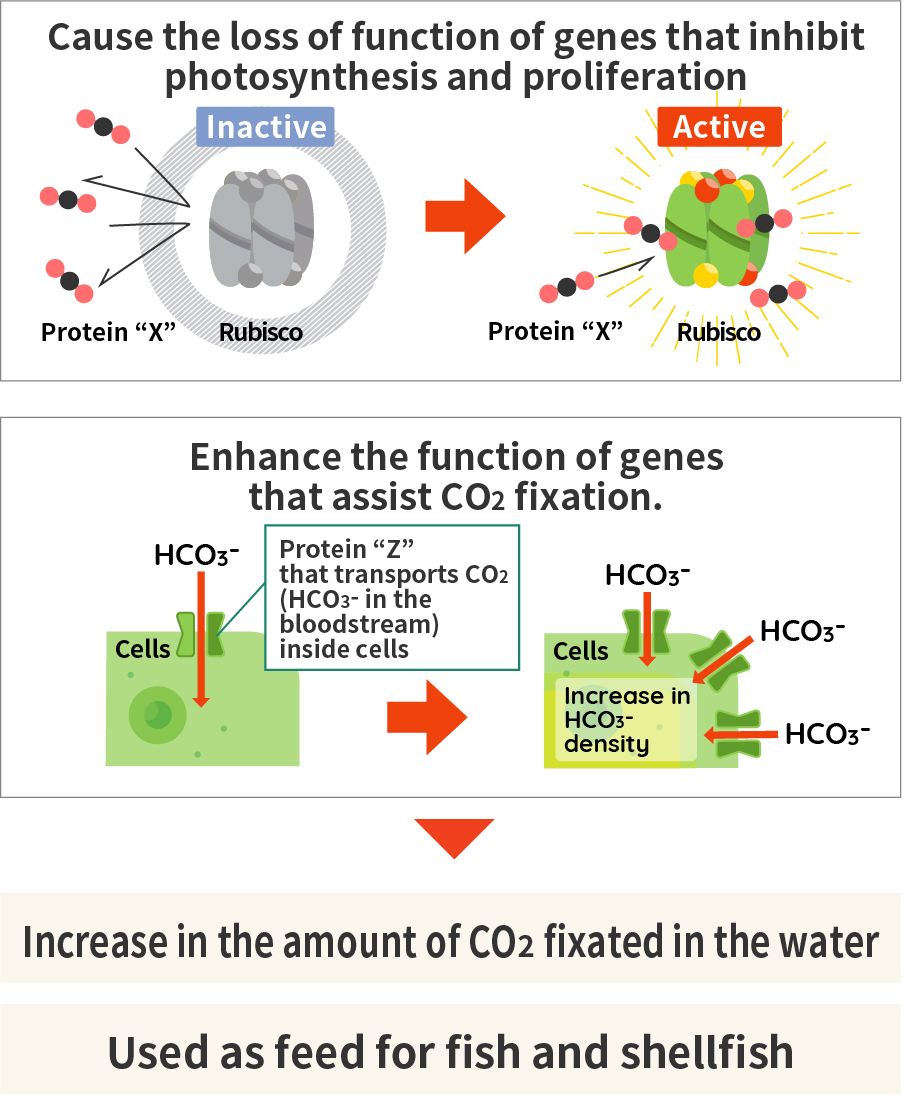 * We aim for microalgae to be used in sectors outside of fisheries, such as agricultural fertilizer
* We aim for microalgae to be used in sectors outside of fisheries, such as agricultural fertilizer
Eco-Friendly,
Circular Land-Based Aquaculture
The land-based aquaculture system that NTT Green & Food aims for is comprised of a plant producing fish and shellfish, a plant producing their feed, microalgae, and a water purification plant that purifies the excrement and other waste of fish and shellfish. First, we will work to develop and use systems in-house, and in the future, we aim to provide these systems to external parties.
